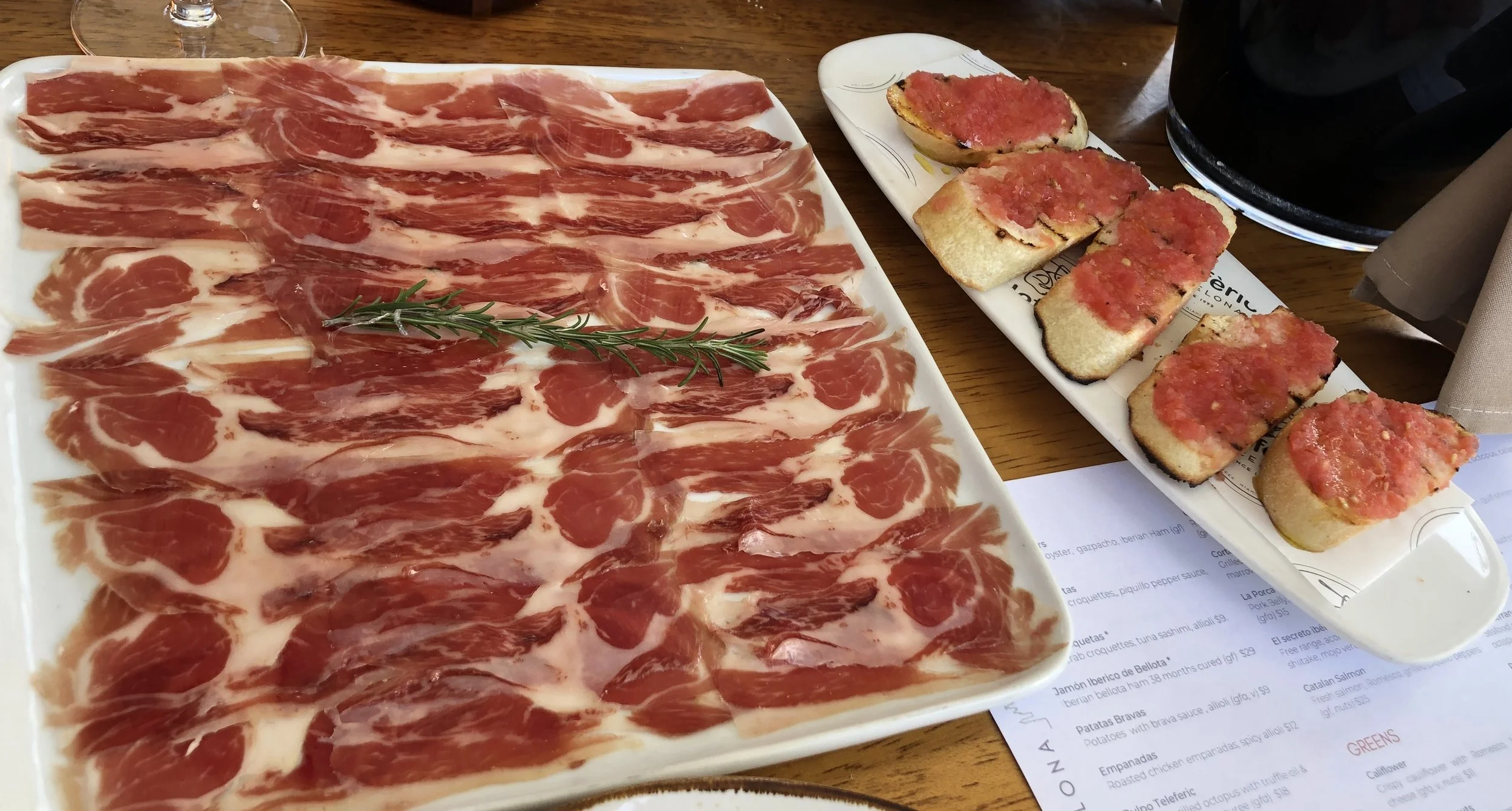Barcelona Travel Tips
Port Vell, Barcelona
One of the most frequent questions I receive as summer approaches is “what should I see and do on my trip to Barcelona?” - and it’s my pleasure to share some recommendations.
As a trained language instructor, I’m delighted to see visitors excited to learn more about Barcelona and its culture. I’m gathering this information here for increased efficiency of sharing - and I hope you find it useful!
While it would be impossible to highlight everything that a diverse city like Barcelona has to offer, this brief guide will be most useful for first-time visitors interested in the most popular sights. For more detailed information, I recommend using Barcelona’s official tourism website.
Plaça de Catalunya view (photo taken from the café at El Corte Inglés)
To See
Note: Consider seeing these sights via a hop-on, hop-off bus tour; it’s an easy way to go to the top sights, and spend however long you want at each one. It’s faster and easier than taking the metro everywhere, and riding for a full loop can it easier to get your bearings.
Port Vell - this port is a big part of Barcelona’s history as a seafaring, trading & industrial city (‘Port Vell’ translates to ‘Old Port’ in the Catalan language).
Today, you can enjoy the sights, have an ice cream at Mare Magnum, walk by the yachts (Barcelona is home to a lot of sailing competitions).
You’ll pass by the monument Columbus Monument, sculpted by Rafael Atché; said to depict Columbus pointing towards the New World with his right hand.
Take a boat ride on Las Golondrinas - bring sun protection! My favorite route is the one that travels alongside all of the beaches.
From Port Vell, head down La Rambla boulevard (caution: pickpockets are active in the La Rambla area, keep a close eye on your belongings):
explore the streets of the Barri Gòtic/Gothic Quarter - take a photo at the Carrer del Bisbe (part of a government building designed by famous Catalan architect Joan Rubió)
see the Catedral de Barcelona - often has flamenco guitarists playing outside
have a snack at the Boqueria Market
eat a meal at Barcelona’s oldest restaurant Can Culleretes
end at the Plaça de Catalunya - inside the El Corte Inglés department store, take the elevator to the top floor and have a coffee & churros at the cafe up there - you’ll get a great view of the city.
Barcelona is the home of Antoni Gaudí, Spain’s most famous architect. His style, Catalan modernisme was defined by the search for a Catalan identity & cultural heritage.
His most famous building is, without a doubt, the Sagrada Família. If you have time, see the inside - lines can be long, so allow some extra time here.
Gaudí’s La Pedrera - Casa Milà is also interesting to see. It is a famous modernisme house that is now a museum, located in the posh Gràcia neighborhood.
And Parc Güell - a little further way from the city center but has some nice views of Barcelona.
The inside of the Camp Nou stadium, home of Barcelona FC.
Camp Nou Stadium - Home of Barcelona FC, a powerhouse in soccer/fútbol as the locals call it! Self-guided tours allow you to see different parts of the stadium, including Barca’s well-stocked trophy room. Fans make this pilgrimage from all over the world.
Have a mojito on La Barceloneta beach - while this may be seen as a typical tourist thing to do, but plenty of locals enjoy it too!
You can take the cable car up to Montjuic for some very nice views of the city.
See more activity ideas on the Barcelona Turisme official site.
Basílica de la Sagrada Família, Antoni Gaudí’s masterpiece
To Eat and Drink
Restaurants to try:
Can Culleretes - this is the oldest restaurant in Barcelona and it serves classic Catalan cuisine. While it may look tiny from the outside, don’t be deceived - it is big inside and a favorite of locals as well as celebrities.
El Nacional - this modern concept is a little fancier. It has different restaurants and bars all housed within one building.
Els Quatre Gats - this is a historic, famous artist hangout (Picasso, Ramon Casas) in a beautiful modernisme building.
Tapas bars: Llamber, Tapeo Born
Have a pastry at La Colmena - a historic bakery
Jamón ibérico
What to order:
seafood: octopus, bacalao
gazpacho (a cold soup that is a staple of Spanish summers), albondigas (meatballs in tomato sauce), patatas bravas (potatoes with a spicy sauce), croquetas, pimientos de Padron (little spicy green peppers), chorizo al vino tinto (red wine chorizo), olives
Fideuà (Catalan classic) and tortilla (at breakfast; also known as Spanish omelet)
Sangria is more of a tourist drink, but it’s very good so don’t let that stop you - plenty of locals also drink it. Locals also drink vino tinto (red wine) / tinto de verano (red wine with lemon/lime soda).
Deserts: crema catalana, miguelitos, buñuelos (a fried dough), tarta de queso (Basque-style cheesecake), Turron nougat (a sweet candy that was historically made by nuns in their convents — a practice that continues in some parts of Spain to this day), churros con chocolate, arroz con leche (Spanish version of rice pudding).
Paella
You can see more ideas for Barcelona eats, activities, and travel advice on the Barcelona Turisme official site. Whether you are planning for an upcoming trip or for ‘someday’, I’m always happy to share more advice - please feel free to reach out (see the Contact section of this website).
Port Vell, Barcelona






